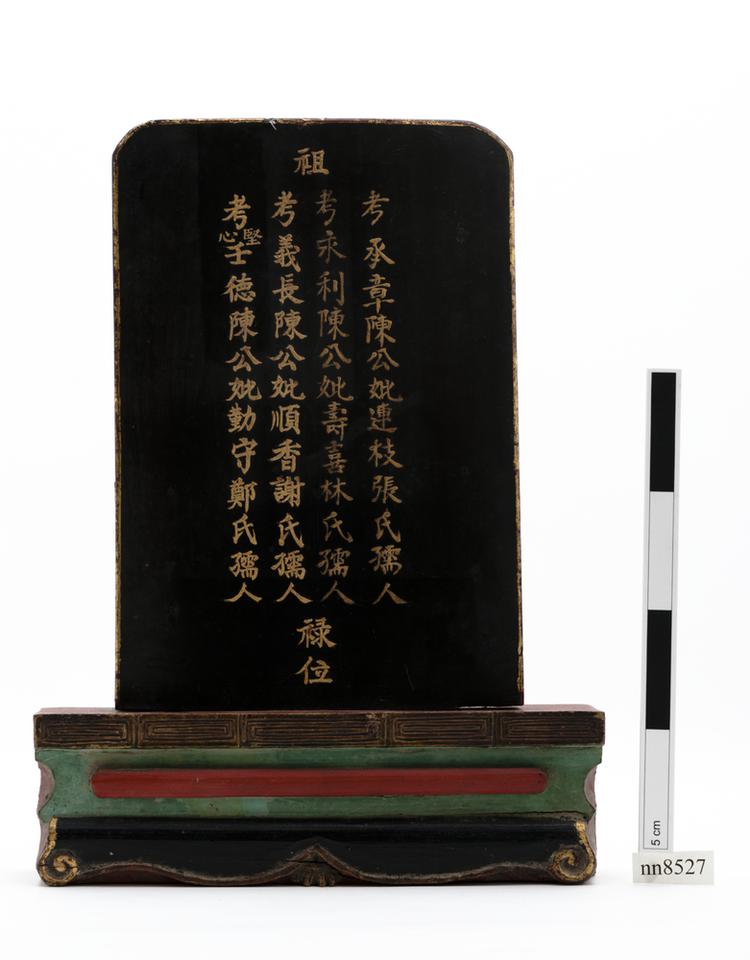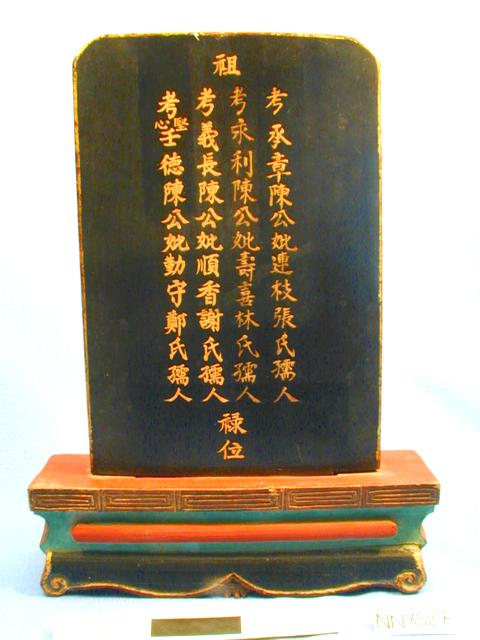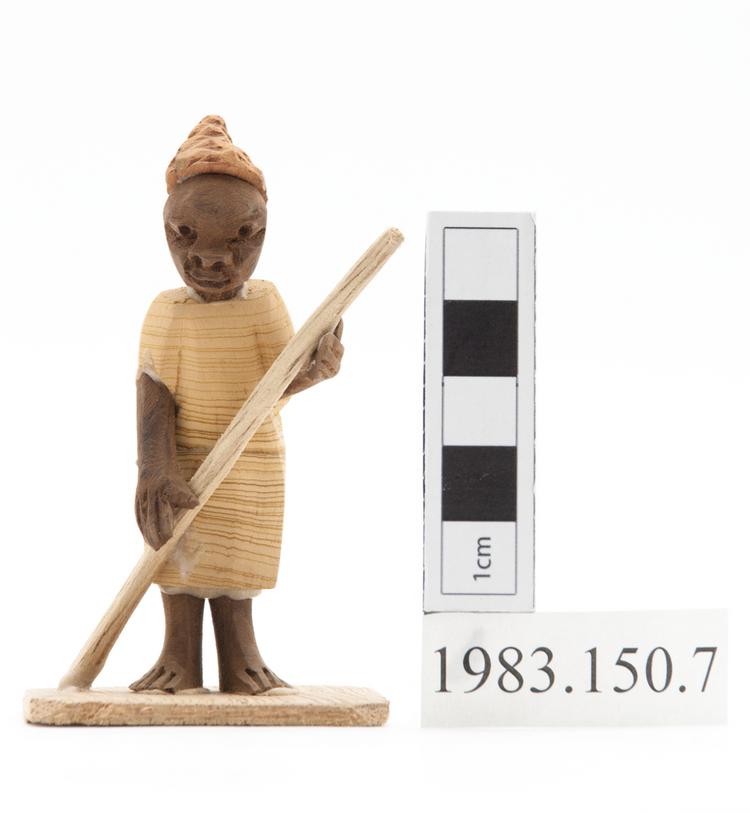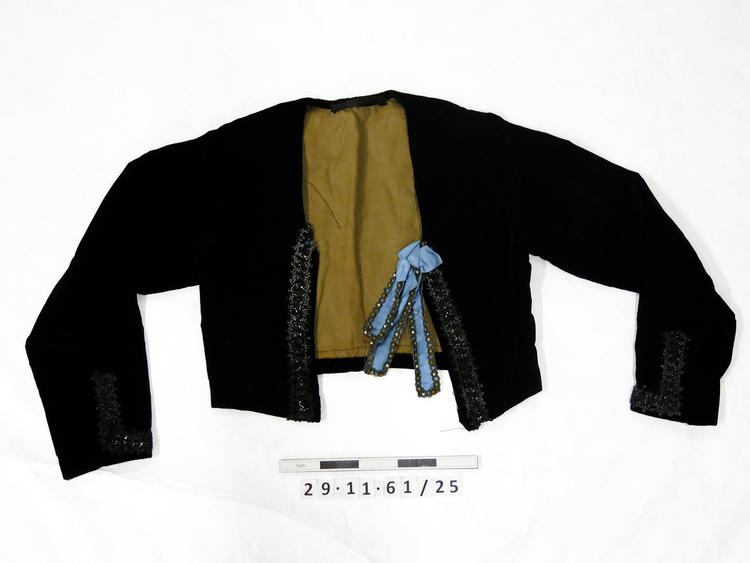

Ancestral tablet made of wood with a painted black background and inscription in Chinese characters picked out in gold. This is an ancestor tablet commemorating four women in the Chen (陳) family. From right to left, the first column reads 祖考承章陳公妣連枝張氏孺人祿位 ‘the shrine of Chen Chen-Zhang’s wife Zhang Lian-Zhi’; the second one is 祖考永利陳公妣壽喜林氏孺人祿位 ‘the shrine of Chen Yong-Li’s wife Lin Shou-Xi’; the third one reads 祖考義長陳公妣順香謝氏孺人祿位 ‘the shrine of Chen Yi-Chang’s wife Xie Shun-Xiang’; and the last one is 祖考壬德陳公妣勤守鄭氏孺人祿位 ‘the shrine of Chen Ren-De’s wife Zheng Qin-Shou’. The word 妣 ‘bi’ in the shrine means ‘my deceased mother’, which reflects that the tablet was offered by the four women’s sons. The four men mentioned on the tablet might be brothers of the Chen family. Therefore, the four women are probably sisters-in-law. Women’s names on tablets are often attached to their husbands’ names (and right after their husbands’ names). The base is coloured green, red and black.
Chinese people believe that once a person dies the soul of the person continues to exist. Each person's soul is thought to exist in the grave as well as in an ancestral tablet. Originally ancestors were remembered by carrying out sacrifices. Through these acts of worship, families believed their ancestors would bless and protect them. If the family failed to honour their ancestors by neglecting them, it was thought that the ancestors would bring their living relatives "misfortunes and calamity". Many Chinese families perform the practice of ancestor worship still today. There is a room or section of the house where the ancestor shrine is located. The shrine holds the ancestral tablet, which is a narrow wooden tablet about twelve inches tall with the name of the relative written on it. Incense and daily offerings are placed in front of the tablet in honour of the ancestor.




